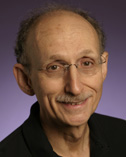12th Annual Riley O. Schaeffer Lecture
Friday October 18, 2019, 4:00 PM
Professor Brian M. Hoffman, Department of Chemistry, Northwestern University, Evanston, IL

Profile: Professor Brian M. Hoffman is an American bioinorganic and physical chemist. He is a graduate of Lane Tech High School in Chicago, studied chemistry at the University of Chicago receiving a Bachelor of Science degree in 1962, and later completed a doctoral program in chemistry at the California Institute of Technology in 1966 under the direction of Harden M. McConnell. Hoffman was briefly a postdoctoral scholar with Alexander Rich at the Massachusetts Institute of Technology. In 1967, he started his appointment at Northwestern University, where he remained throughout his career. Using electron-nuclear double-resonance (ENDOR) spectroscopy, Hoffman investigated many enzyme mechanisms. Subjects of this work include nitric oxide synthase, cytochrome P450, nickel-iron hydrogenase, and nitrogenase. During his career, Hoffman’s recognitions include:
- The Joseph Chatt Award in 2012 for outstanding multi-disciplinary research in the areas, which span inorganic chemistry and biochemistry.
- The F. A. Cotton Medal for Excellence in Chemical Research in 2013 for contributions of unique range, depth, and importance to inorganic and structural chemistry, especially the discovery and elucidation of multiple metal-metal bonds and the application of group theory to chemical problems.
- The Bruker Award for major contributions in the application of electron spin resonance in biological systems or in chemistry.
Hoffman is a member of the National Academy of Sciences, the American Academy of Arts and Sciences, and the American Association for the Advancement of Science. He was also a Sloan Fellow.
Abstract: The source of all bioavailable nitrogen is atmospheric N2, which must be reduced to two NH3 molecules before it can be assimilated by any higher form of life. Even today, more than 100 years after the invention of the Haber-Bosch process for industrial generation of NH3 from N2, biological nitrogen fixation — the enzymatic reduction of N2 to two NH3 molecules — provides the nitrogen nutrient that supports more than half the human population, as well as the rest of the biosphere. This biological process, which involves one of the most challenging chemical transformation in biology, the cleavage of the N≡N triple bond, is catalyzed by nitrogenases, primarily the Modependent enzyme, that are found only in certain classes of bacteria. Despite decades of intensive study in many laboratories, until quite recently almost nothing was known about the mechanism of this process. Advanced paramagnetic resonance (EPR/ENDOR), photophysical, bioelectrochemical, enzymological, and computational studies of intermediates formed during turnover of the enzyme and freeze-trapped by the laboratories of our collaborators Profs. Lance Seefeldt and Dennis Dean, have now revealed the central mechanistic steps by which both the Mo- and the alternative Fe- and V-dependent nitrogenases accumulate reducing equivalents and carry out the reduction of the N≡N triple bond. This talk will describe this mechanism.
See Announcement
